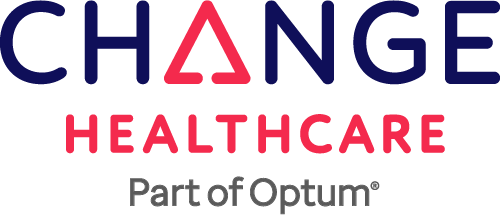 Since implementation of the No Surprises Act (NSA) on January 1st, 2022, there have been four lawsuits brought on by the Texas Medical Association (TMA). Interesting that the TMA is more vocal and active legally and supportive of physicians in America than the American Medical Association (AMA). Not sure why anyone would pay dues to the AMA… but I digress.
Since implementation of the No Surprises Act (NSA) on January 1st, 2022, there have been four lawsuits brought on by the Texas Medical Association (TMA). Interesting that the TMA is more vocal and active legally and supportive of physicians in America than the American Medical Association (AMA). Not sure why anyone would pay dues to the AMA… but I digress.
The NSA is designed to minimize surprise bills in three circumstances:
- No out-of-network (OON) charges are allowed in emergency situations and any OON charges will be “downcoded” to the qualifying payment amount (QPA) so that the patient is only responsible for covering in-network rates. More on the QPA in a moment.
- No OON charges in non-emergency situations unless the provider conveys the potential OON costs to the patient ahead of time and the patient signs a consent that they agree to pay the OON rates and accept the possibility that they will be balanced billed, thereby giving up any surprise billing protections
- For uninsured/self-pay individuals, the provider must give the patient a Good Faith Estimate (GFE) of all reasonably expected charges from all providers involved in a procedure or for all expected recurring services that are reasonably expected to take place within a calendar year
TMA Lawsuits
The TMA lawsuits all address the first situation – when OON rates are downcoded to the QPA for emergency services. The first and second TMA lawsuits, both brought in 2022, focused specifically on how the QPA or qualifying payment amount would be determined. This is a term that was first introduced in the text of the NSA on page 1579 of the larger Consolidated Appropriations Act passed in December of 2020.
By definition, the methodology to determine the QPA “may account for relevant payment adjustments that take into account quality or facility type (including higher acuity settings and the case-mix of various facility types) that are otherwise taken into account for purposes of determining payment amounts with respect to participating facilities.”
Several pages later (page 1582), the Act also states that the QPA is “the median of the contracted rates recognized by the plan or issuer,…that are offered within the same insurance market…for the same or a similar item or service that is provided by a provider in the same or similar specialty and provided in the geographic region in which the item or service is furnished,…”
In its totality, the NSA, and Congress, intended for the QPA to reflect the median in-network rate as well as the quality, location of service and complexity of the case under review. However, when the Center for Medicare and Medicaid Services (CMS) was charged with developing the regulations for the NSA, they essentially equated the QPA with the median in-network rate, without assessment of the other factors mentioned in the NSA.
The IDR Process
Therefore, when a provider (hospital, physician, etc) chose to dispute the reimbursement they received in an emergency situation, they would submit their case to an IDR (independent dispute resolution) process. In this case, the arbiter, following CMS regulations, would determine the appropriate payment (the QPA) based solely on the median in-network rate, putting more leverage on the side of the insurer who is solely responsible for the makeup of the QPA.
In the first lawsuit, the judge sided with the TMA, stating that the CMS regulations favored the insurers. CMS updated their regulations but not to the satisfaction of the TMA who filed a second follow up suit. On February 6th, the same judge again sided with the TMA and ruled that the revised arbitration process still favors the insurers. At this time, the IDR process has been placed on hold and any payment determinations since February 6th (the date of the ruling), have been recalled.
According to Becker’s ASC Review, CMS said in a letter that HHS and the Treasury Departments are evaluating and updating the IDR process to make them consistent with the court’s decision. As of February 16th, there is no additional guidance from CMS and the IDR process continues to be on hold.
Ghost Rates
The third suit filed by the TMA deals with several ways insurers can unfairly reduce the QPA, including ghost rates. The QPA is based on the insurers median (not mean) in-network rates. Therefore, all rates for a procedure are lined up and the middle rate, or average of the two middle rates, determine the QPA. The text of the NSA requires that the QPA must compare all of the in-network rates performed by all of the physicians in the same geographic area that perform the procedure in question.
In actuality, the rates are compared for all providers in the area, not just the providers that perform the procedure.
So that providers don’t have to call the insurer to say, “I do this procedure” or “I don’t do that procedure,” every procedure code is assigned to every provider. That means codes, and rates, for a three vessel cardiac bypass are assigned to all providers, not just the ones that perform it. Heart surgeons who perform the procedure and primary care doctors who would never be expected to perform the procedure, and who have no idea that procedure is associated with their NPI number in the insurance database, are compared for the purposes of calculating the QPA.
What are the consequences of evaluating all rates for all providers for a particular procedure? Well, if a primary care doctor has no intention of performing a cardiac bypass, they have no reason to negotiate a better rate. So if the rate assigned to the primary care physician is $1, it will be compared to the higher rate negotiated by the heart surgeon. By having so many other unnegotiated rates in comparison to negotiated rates, the QPA is unfairly reduced. This is the subject of the third lawsuit.
The fourth, and probably not final lawsuit by the TMA addresses newly increased administrative fees by CMS. For a provider to launch an IDR, the provider and insurer must both pay an administrative fee to start the process as well as a fee paid directly to the arbiter (the entity fee). The administrative fee is non-refundable for both sides but the winner of arbitration is refunded their arbitration fee ($200-$700).
While CMS said as recently as October that the IDR administrative fees would stay at the $50 level, they increased the rates 600% on January 1st to $350. CMS states that the fees were increased due to rising costs associated with the IDR process. While they don’t specify the reason further, it may have to do with the unanticipated usage of the IDR process. CMS expected 17,500 cases for all of 2022. They received 164,000. TMA is suing for the increased rates since in many cases, the administration fee is greater than the payment amount being requested through the IDR process.
At this time, there is no ruling on the third and fourth lawsuits and we’re awaiting new guidance from CMS regarding the IDR process after the second successful TMA suit.




